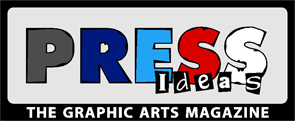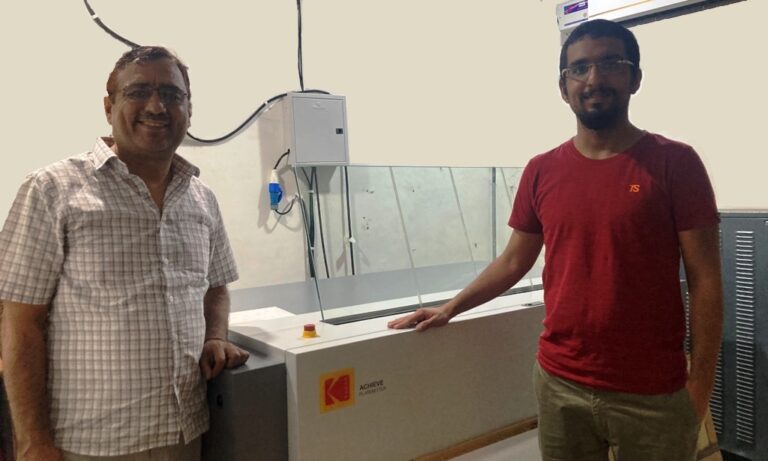The bringing of plate production in-house, brings along a lot of advantages including the hassle free Process-free plate production for the Kala Amb based label and packaging converter.
Campolina is a Brazilian race horse known for its large size, colours and elegant movements. Manoj Arora took the inspiration from the speed, strength and elegance of the beautiful beast to lay the foundation of an inspiring printing business in Kala Amb, Himachal Pradesh. It was in the year 2010 when Manoj decided to quit his job in an export house to set up a printing business. One of his close relatives was running a pharma unit and they both worked on the idea of establishing Campolina Offset.
Those were the days of the Adast Dominant presses in India and he started with a 2 colour press producing labels and packaging for the pharma sector. Soon Campolina expanded capabilities with pasting and die cutting equipment and the manual pasting was converted to automatic in following years. It kept adding die cutting machines and had added another 4-colour Dominant press by 2015. Then it was the addition of an Autoprint Offline UV machine which was followed by a drip off UV machine, also from Autoprint. Autoprint technology played a crucial role in the initial journey of Campolina’s growth – due to the value addition, the packaging and converting business could strongly put off the competitive challenge and offer better solutions to its customers.
The latest milestone at Campolina is its recent Kodak Achieve Process-free CtP device installation. What makes the installation special is that the idea to install a CtP first came about a decade ago – when Manoj actually booked a CtP to eventually cancel it for quite interesting reasons. “We worked from a location which was adjacent to a heavy iron forging unit,” he shares. “The regular stamping there used to produce lot of vibrations in our whole facility. It actually made it impractical for us to install the sophisticated CtP then. Therefore, we dropped the idea for the time being,” he adds.
Now, when they have finally installed their CtP, the decision was instant and based on Manoj’s fondness for a process-free platform. “Going Process-free was the foremost reason. As we were suffering from many issues like inability to meet time schedules, quality and consistency, we were desperately looking for a way to bring the plate production in-house,” asserts Manoj.
“Though the cost factor was just a little downside, yet everything else was better about it. We were bringing an eco-friendly technology, which brought along ground breaking ease of operation and required fewer staff for even enhanced production,” praises Manoj.
Campolina Offset is led by the father and son duo of Mr. Manoj Arora and Mr. Vikrant Arora, who chose to join the family business instead of going to the US, the other carrier path he didn’t. Right now he is focused on the printing business and has his sight set on doubling their turnover in next 4-5 years. “The future of Campolina is in the next generation,” says Manoj, gesturing towards Vikrant. Under the vastly experienced guidance of his father, Vikrant looks forward to a growth driven by further streamlined processes. He sees ERP as the next step in their expansion/ standardization. The father plans to add a high-end printing press to expand the production capacity. “First step in standardization has been taken with Kodak Achieve CtP. Now further standardization of processes and streamlining them will create the smooth path ahead. The obvious course should be the press upgrade, then the ERP and so on,” envisages Vikrant.
The jobs, from order to delivery, are meticulously planned at Campolina. The jobs for the coming day are already forwarded to responsible people on the preceding day. Everything is finely laid out and tight schedules are followed to keep everything in order.
Both Majoj and Vikrant are very enthusiastic about their latest Kodak CtP. When asked about the entry point for printers to go for a CtP, Majoj fervently puts it anything around a Rs.5-6 Cr. turnover. “Process-free is fast catching up with Indian printers. CtP devices are being installed pretty quickly and regularly,” he confirms.
“Process-free is getting greater acceptance now. We have customers with about 500 plates’ consumption successfully running CtPs in their facilities. Today, we have over 250 Process-free CtP devices running across the country,” adds Mr. Natesh Puri, National Manager- Plates & Chemical and Packaging Segment at Eastman Kodak Company.
“With the increased interest in environmental friendly technology of Process-free plate production by printers in India, we see a bright future for both the adoption of the technology as well as the success of its adopters” added Ashish Sharma of Aarushi Agencies who was instrumental in installing the Kodak system at Campolina Offset. It not only reduces process time; saves on labour, energy and chemistry costs; and brings consistency in quality; but also reduces the pressure on environment by conserving energy and reducing discharge of pollutants. With many leading the CtP adoption today at earlier than ever entry-point of plate consumption as well as turnover, there is an ample scope for thousands of print businesses to make this economically smart choice.



